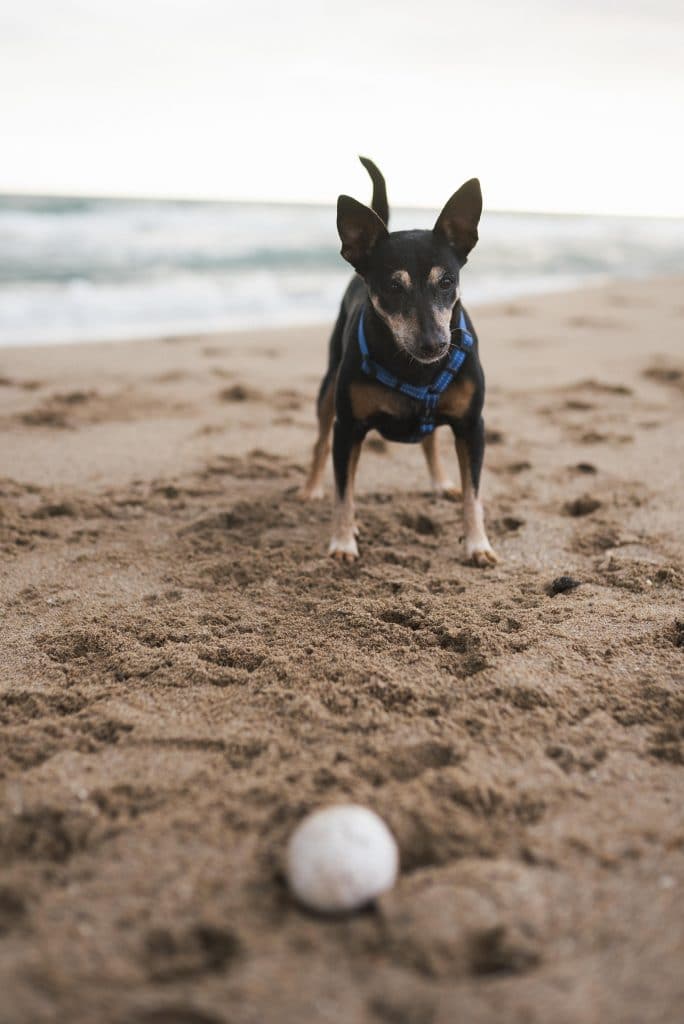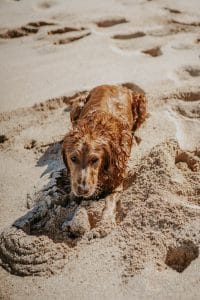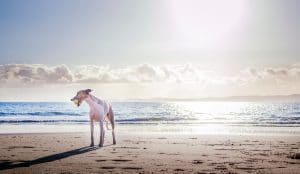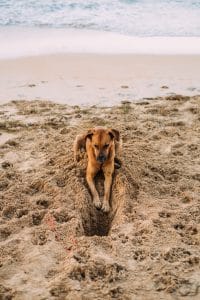
The Dangers of Dogs eating sand on the Beach
The dangers of dogs eating sand:
The beach might be a fun location to spend an afternoon with your dog, but it can also be dangerous. Owners of dogs should be mindful of their canine companion’s activities. While no one intentionally feeds their dog sand, it is possible for it to swallow hard dirt without even realizing it. Sand is frequently consumed in modest quantities by dogs. Licking dirty claws, for example, can result in a small amount of sand being swallowed. Digging in the sand, particularly with a dog’s snout in the ground, might result in a little amount of sand being swallowed. Dogs fetching objects in the water, on the other hand, pose the greatest threat.
Abdominal bloat:
You might not notice anything wrong at first, but dogs may later experience the pain of sand penetration. Sand is heavy, and as it compacts in the intestines, it can block the entire digestive track. Food and water will be unable to reach the stomach for digestion, and the dog will become ill very quickly. The dog will be nauseated whether he vomits. When your dog is dizzy and uncomfortable, he becomes restless yet does not feel comfortable lying down.
Abdominal bloat symptoms include:
If you’ve been to the beach and see any of the symptoms listed below, you should take your dog to the veterinarian immediately soon.

- Lethargy
- Loss of appetite
- Vomiting
- Dehydration
- Constipation
- Diarrhea
- Panting
- Abdominal pain
- Hard stomach
Treatment:
When it comes to treatment, the vet may start by giving the dog a lot of water to help the sand flow through his system. Because this can be extremely painful, your dog may need to stay in the hospital for a while. It will also have to keep an eye out for symptoms ofdegradation.
A veterinarian can also undertake surgery to remove sand from your dog’s system. Because surgery may not be able to remove all the sand, your dog may require additional therapy to get the sand out. It can take weeks to entirely remove the sand.
Lethargy:
You may also notice that your dog becomes tired and loses his appetite after eating sand. It can’t eat or discharge outgases since its intestine is obstructed due to the generation of undesirable gases. To handle the matter, you should contact your veterinarian.
Dehydration:
Wheezing, sunken eyes, and a dry nose and gums are all symptoms of dehydration in your dog. You can also do a simple test to determine whether your dog requires fluids. Simply pinch a small area of loose skin and gently pull it away from your dog’s body. When you let go, see how quickly your skin returns to its original place. The skin of a healthy dog will return fast, but a dehydrated dog will react differently. The skin will appear sticky and will gradually return to normal.
Salt poisoning:
Stop your dog from wrapping itself in seawater. They can get sick from the salts, bacteria, and parasites in the water. Make sure you have enough freshwater to give your dog throughout the day to avoid them from drinking saltwater. Before leaving the beach, wash your dog’s skin and nails with fresh water to avoid irritation.
Beach safety for dogs:
Because most sand emissions are unintentional, they might be difficult to prevent. However, there are a few points to remember:
Keep an eye on your dog:
Examine your dog on the beach more closely. Tell him to stop pulling sand if you observe him doing so. Consider bringing toys to the beach that do not absorb sand, such as a plastic frisbee or Plastic balls.
Maintain a constant supply of fresh water:
Take lots of fresh water with you and make sure your dog always has access to it. Allowing him to drink salty water is not a good idea. There is a risk of seawater toxicity in addition to swallowing sand.
Stop your dog from digging holes:
Digging in the sand is a fun activity for your dog, but it is also risky. They’re probably eating it if their snout is close to the ground and they’re throwing sand up in the air at the same time. If you notice your dog digging, attempt to divert his attention with anything else.
Spend as little time as possible:
The longer you spend at the beach, the more sand your dog will ingest. A beach is a wonderful place for both dogs and humans, so don’t avoid going, but be sensible when you do. Stay a while, get some exercise, and then return home for a relaxing bath and snooze.
Get your dog an open-basket muzzle:
Going for a stroll with your dog that is a compulsive eater can be extremely risky for them. You are not only letting your dog to breathe properly, but you are also protecting them from swallowing anything harmful to their health, such as sand, by placing an open basket on them.
Consult your veterinarian:
If your dog enjoys eating sand and other strange items, he or she may be malnourished. Consult your veterinarian to see if your dog’s diet needs to be altered.
You’ll have a great time on the beach with your dog if you remember these helpful hints.


